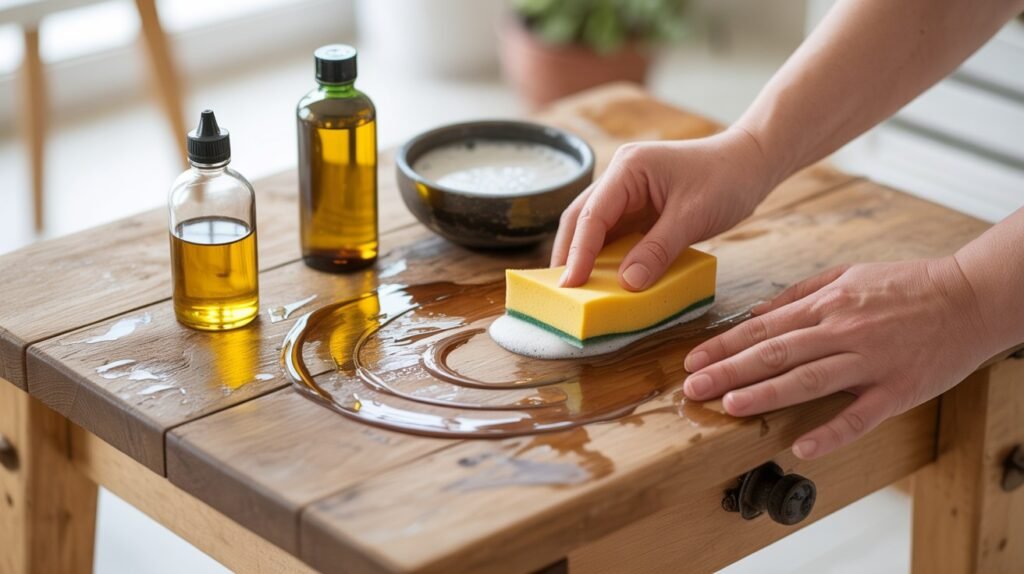We’ve all been there. You’re working on an art project or touching up furniture, and acrylic paint ends up where it shouldn’t be – on your beautiful wood surface.
Don’t panic. Acrylic paint can be removed from wood, even when it’s completely dry.
This guide shows you three proven methods that work: the rubbing alcohol technique, the natural olive oil approach, and the simple soap and water solution.
You’ll learn which method works best for your specific situation. Whether you’re dealing with fresh spills or stubborn dried paint, we’ve got you covered.
Why trust this guide? These methods come from real-world testing and professional furniture restoration experts. No fancy chemicals needed – just common household items.
We’ll walk you through each step carefully. You’ll save money on professional services and protect your wood surfaces from damage.
By the end, you’ll know exactly how to tackle any acrylic paint mishap on wood. Let’s get that paint off safely and effectively.
Understanding Acrylic Paint on Wood Surfaces
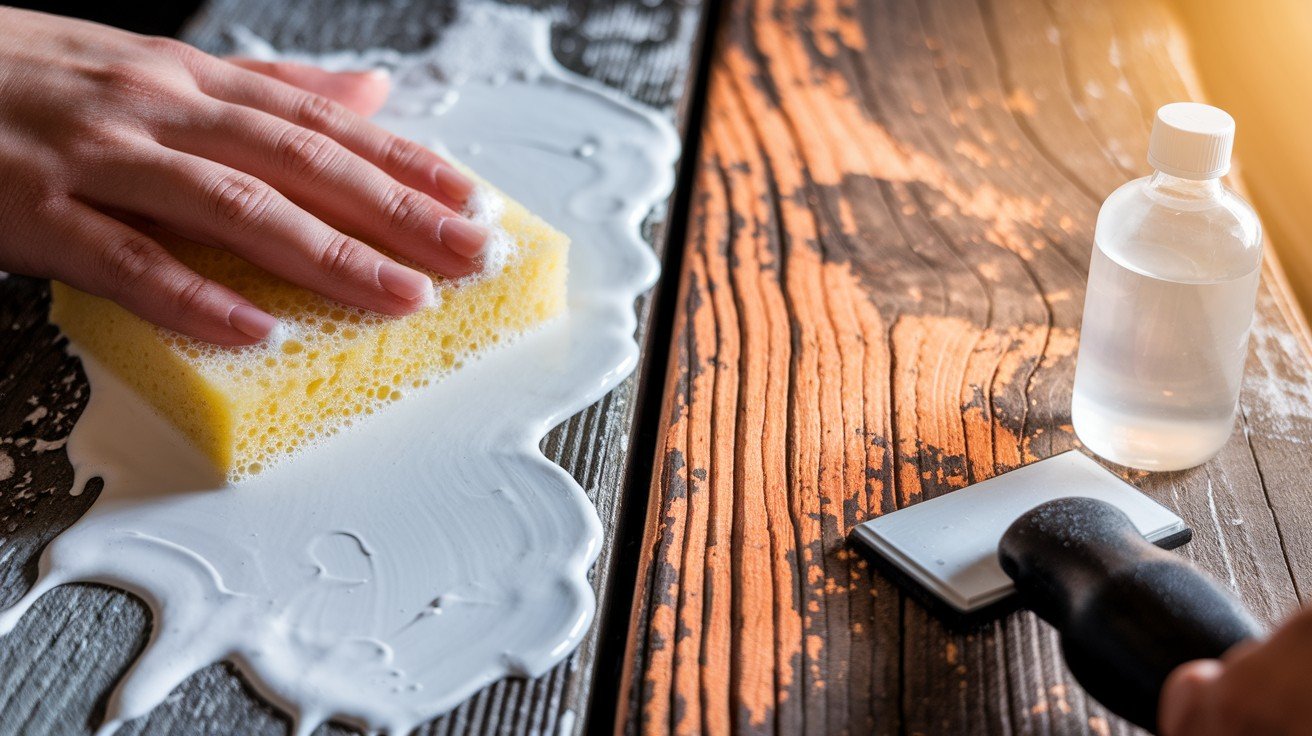
Not all wood surfaces are the same. The type of finish on your wood determines which removal methods you can safely use. Let me explain why this matters.
Types of Wood Finishes and Removal Impact
Bare, unfinished wood gives you the most options. You can use alcohol, oils, or soap without worrying about damaging a protective coating. This wood soaks up paint easily but also accepts stronger removal methods.
Varnished wood surfaces are trickier. That shiny protective layer looks beautiful, but it limits your choices. Strong solvents can dull or discolor the varnish permanently.
Here’s the truth: finish type determines everything. Use the wrong method on varnished wood, and you’ll create a bigger problem than the paint stain.
Wet vs. Dried Paint Considerations
Fresh paint is your friend. It wipes away easily with basic soap and water. You have maybe 15-20 minutes before it starts setting. But here’s what happens next.
Dried acrylic paint bonds with wood fibers. It becomes part of the surface. That’s why you need stronger methods like alcohol or scraping. The lesson? Act fast when spills happen. Every minute counts.
Essential Tools and Materials
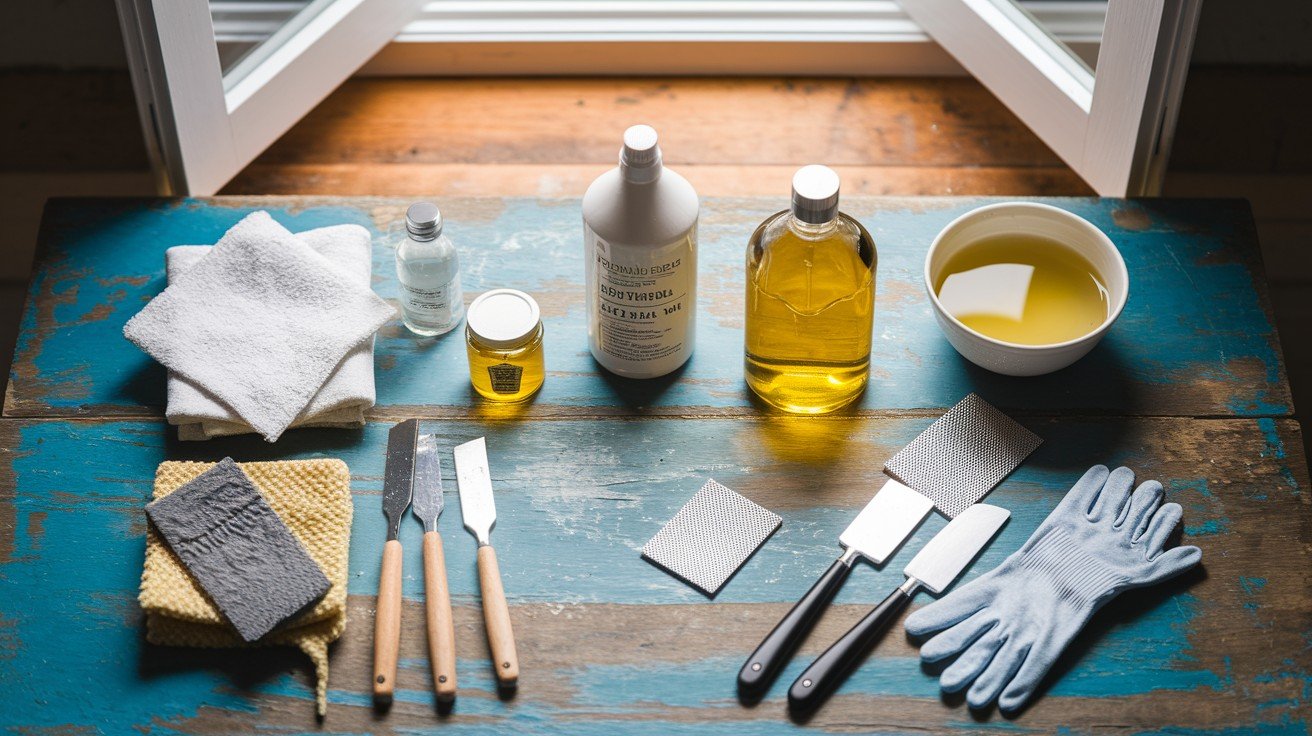
You don’t need expensive specialty products. Most of these items are probably in your house right now.
Basic Supplies Needed
Here’s your shopping list: Rubbing alcohol (99% concentration works best), denatured alcohol (stronger option), olive oil (natural, gentle choice), clean cloths and rags (you’ll need several), paint scrapers and putty knives, steel wool pads (fine grade), and soap and warm water.
Don’t buy everything at once. Start with what you have. You can always get stronger supplies if needed.
Safety Basics
Protect yourself first. Paint removal isn’t dangerous, but it requires common sense. Always wear protective gloves. Alcohol and solvents dry out your skin quickly. Good ventilation prevents headaches from fumes.
Here’s something important: alcohol-based solvents are flammable. Keep them away from heat sources, candles, or pilot lights. Work outside when possible. Your lungs will thank you.
Method 1: Rubbing Alcohol Technique (Most Effective)
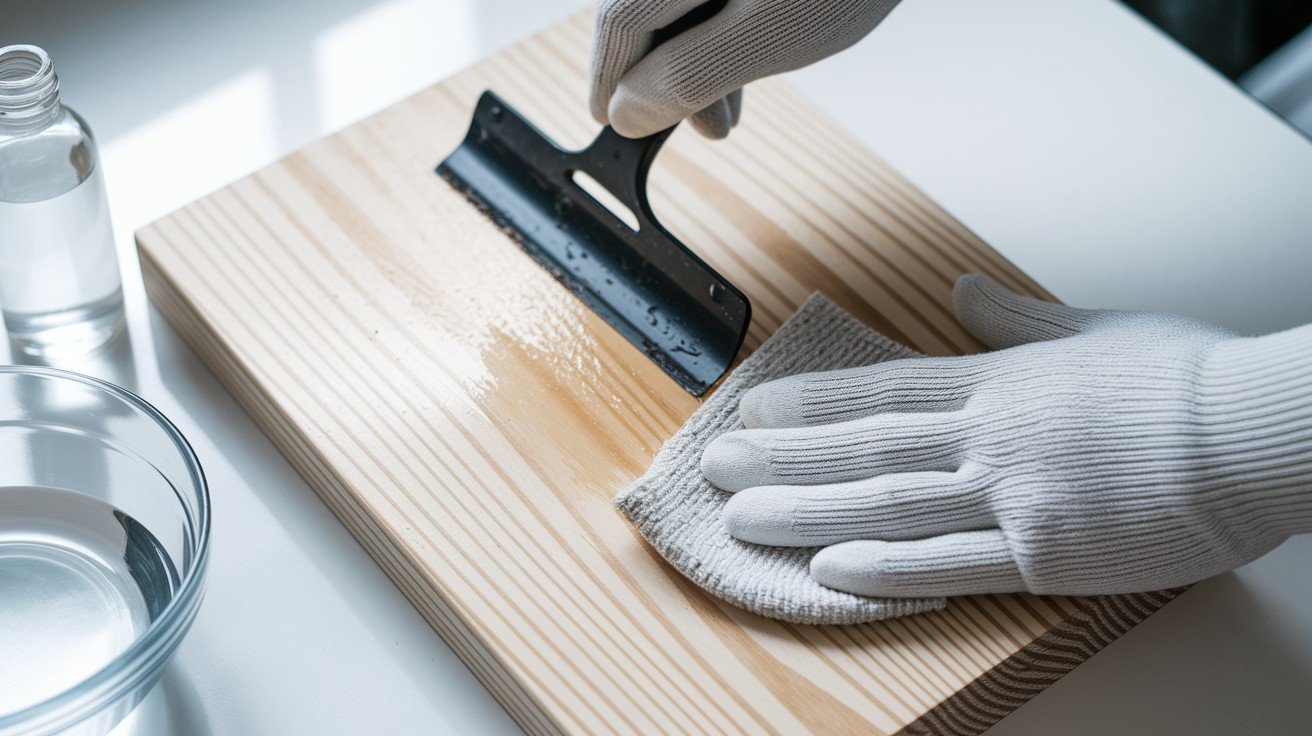
This method works better than anything else I’ve tried. It’s my go-to for stubborn dried paint.
When to Use This Method
Perfect for dried acrylic paint on bare wood. The alcohol breaks down the paint’s bond with wood fibers. But wait. Never use this on varnished surfaces. The alcohol can damage that protective finish. You’ll end up with dull spots or discoloration.
Step-by-Step Process
Follow these steps exactly: Gently scrape paint with paint scraper, apply steel wool to remaining paint, pour rubbing alcohol onto cloth, and apply to stain, rub continuously for several minutes.
Replace the cloth when saturated with paint, rinse with water to remove alcohol residue, wipe dry completely, and repeat if necessary.
Take your time with the rubbing step. Continuous rubbing is key. The alcohol needs time to penetrate the paint.
Expected Results and Tips
You’ll smell alcohol for a while. That odor disappears over time, especially once you apply a new finish. This method removes even the most stubborn dried paint. It might take two or three attempts, but it works.
Pro tip: Change clothes frequently. Dirty clothes just spread paint around.
Method 2: Olive Oil Natural Approach
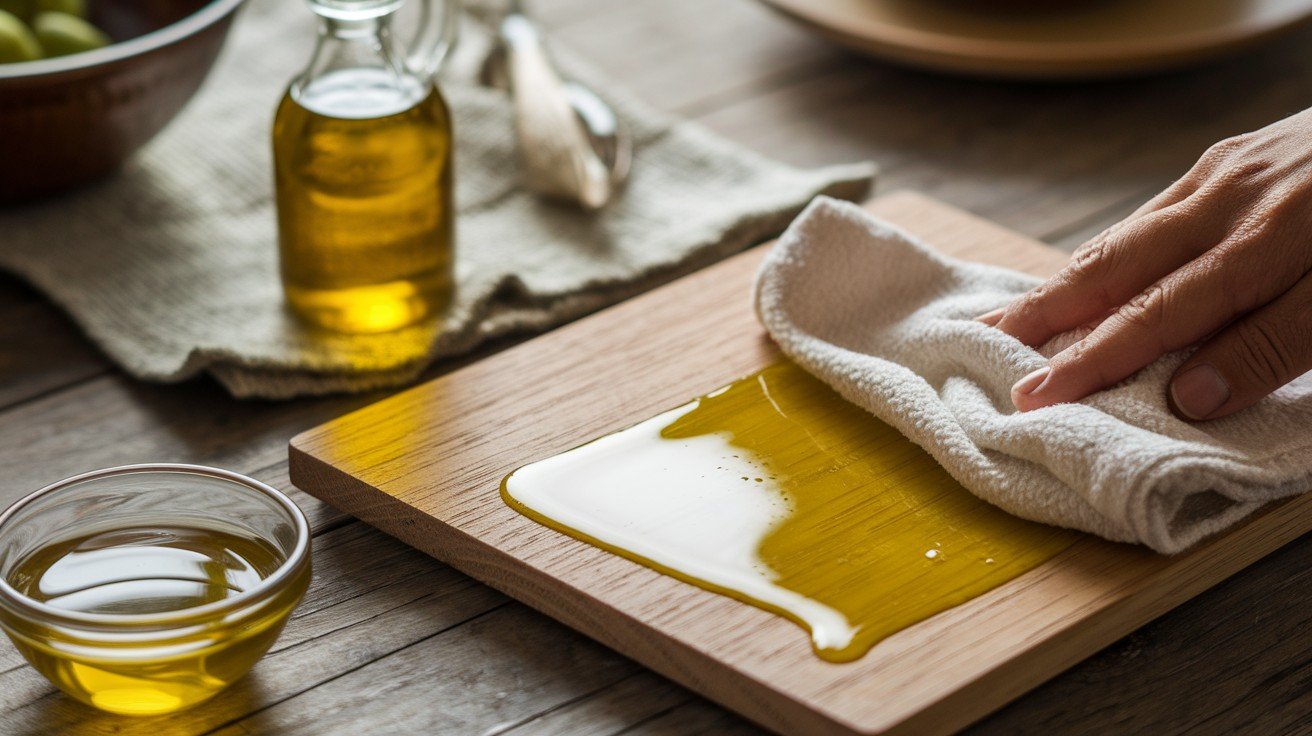
Love natural solutions? This method uses kitchen ingredients you already have.
When to Choose This Method
Perfect natural, non-toxic alternative to harsh chemicals. Great if you have kids or pets around. Use this as your first attempt before stronger methods. It smells pleasant and won’t hurt you or the wood.
Here’s the truth: it’s gentler but less effective than alcohol methods.
Application Steps
This process requires patience: Apply sufficient olive oil to soften paint, cover the area with a cloth, wait a minimum of one hour, scrape softened paint with a scraper or knife, and repeat the process or switch methods if unsuccessful.
That one-hour wait is crucial. Don’t rush this step. The oil needs time to penetrate the paint.
Success Expectations
Lower success rate than alcohol methods, but it’s worth trying first. Some people get great results, others need stronger approaches. Think of it as a good starting point for sensitive users. No harsh fumes or skin irritation.
Method 3: Soap and Water Solution
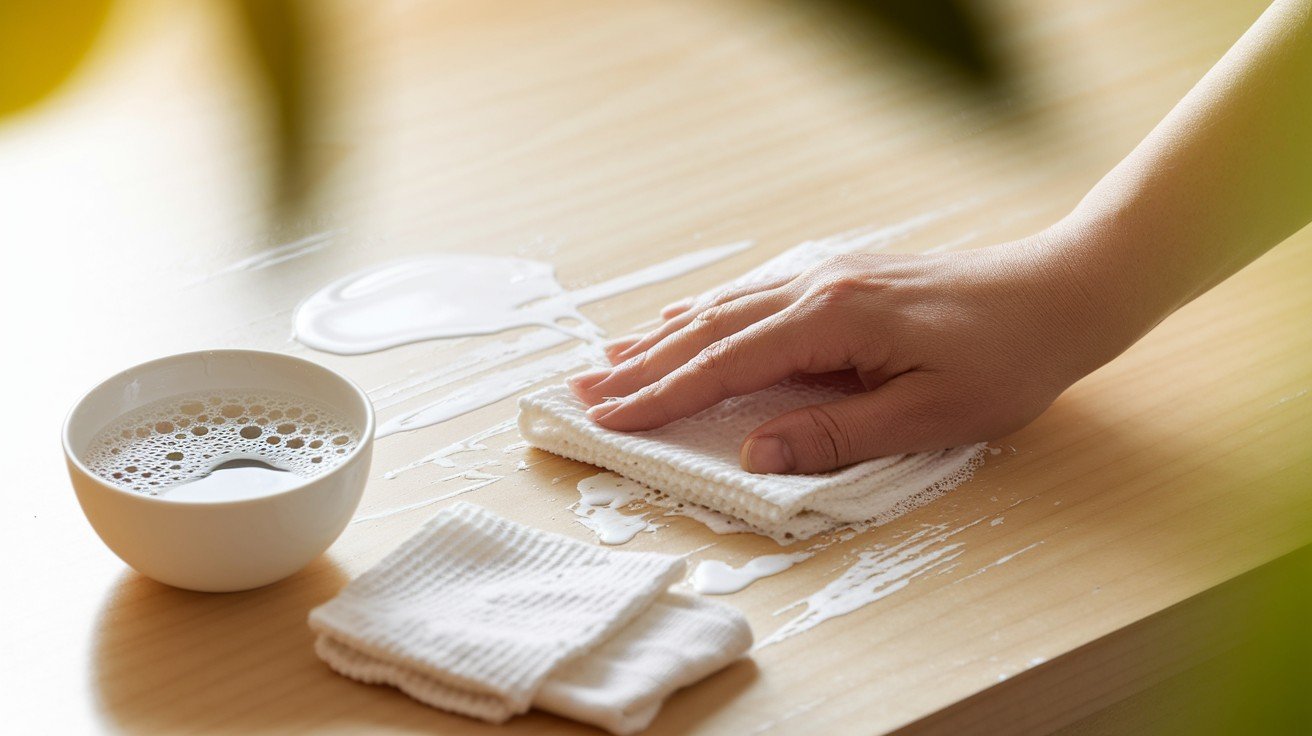
The simplest method of all. Sometimes the easiest solution works best.
Best Applications
Most effective for fresh, wet acrylic paint. Catches spills before they become permanent problems. You’ll occasionally succeed with recently dried paint, too. It depends on how long the paint has been sitting. Safe for all wood finishes. No risk of damage to varnish or stain.
Simple Steps
Anyone can do this: Soak cloth in warm soapy water, wipe painted surface gently, replace cloth when saturated, continue scrubbing until paint removal, dry with clean cloth, and scrape remaining dried paint if needed.
Warm water works better than cold. It helps dissolve the paint faster.
Safety and Best Practices
Your safety matters more than perfect paint removal. These practices prevent accidents and protect your wood.
Ventilation and Protection
Work outdoors when possible. Fresh air prevents headache-causing fumes from building up. Wear gloves with all methods. Even olive oil can irritate sensitive skin over time.
Here’s a critical point: keep fire safety in mind with alcohol-based solvents. They ignite easily.
Surface Protection Tips
Test methods on inconspicuous areas first. Better to find problems in hidden spots than on visible surfaces. Use gentle pressure to avoid wood damage. Aggressive scraping creates scratches that are harder to fix than paint stains. Know when to stop and seek professional help. Valuable antiques deserve expert care.
Conclusion
Removing acrylic paint from wood doesn’t have to be a nightmare. You now have three reliable methods that work in different situations.
Start with soap and water for fresh spills – it’s the gentlest approach. For dried paint on bare wood, rubbing alcohol is your best friend. It’s effective and affordable. If you prefer natural solutions, olive oil offers a gentle alternative.
Remember the golden rule: varnished wood needs special care. Stick to hot, soapy water only to protect that finish.
Act fast when accidents happen. Fresh paint comes off much easier than dried paint. Keep rubbing alcohol handy for future mishaps.
Most importantly, test any method on a hidden spot first. Your wood surfaces are valuable, and patience prevents damage.
With these techniques, you can confidently handle any acrylic paint situation. Your wood furniture will thank you.
Frequently Asked Questions
What removes acrylic paint from wood fastest?
Rubbing alcohol works fastest on dried paint. For fresh paint, immediate soap and water removal prevents permanent staining effectively.
Can I use acetone on wood surfaces?
Acetone works only on bare, non-porous wood. Avoid using on varnished surfaces as it damages protective finishes permanently.
Does vinegar remove acrylic paint from wood?
Vinegar softens thin paint layers but isn’t strong enough alone. It works best combined with gentle scraping techniques.
Is olive oil effective for paint removal?
Olive oil provides natural, gentle removal for light paint stains. It’s less effective than alcohol but a safer option.
How do I remove paint without damaging wood?
Start with the gentlest methods like soap water, test inconspicuous areas first, use light pressure, and avoid harsh chemicals always.

